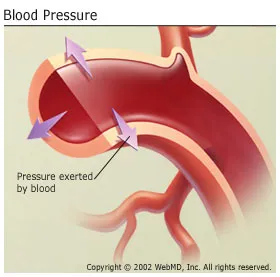Optimal blood pressure is less than 120/80 (systolic/diastolic). In healthy people, low blood pressure without any symptoms is not usually a concern and does not need to be treated. But low blood pressure can be a sign of an underlying problem -- especially in the elderly -- where it may cause inadequate blood flow to the heart, brain, and other vital organs.
 Chronic low blood pressure with no symptoms is almost never serious. But health problems can occur when blood pressure drops suddenly and the brain is deprived of an adequate blood supply. This can lead to dizziness or lightheadedness. Sudden drops in blood pressure most commonly occur in someone who's rising from a lying down or sitting position to standing. This kind of low blood pressure is known as postural hypotension or orthostatic hypotension. Another type of low blood pressure can occur when someone stands for a long period of time. This is called neurally mediated hypotension. When it leads to passing out, if is called vasovagal syncope.
Chronic low blood pressure with no symptoms is almost never serious. But health problems can occur when blood pressure drops suddenly and the brain is deprived of an adequate blood supply. This can lead to dizziness or lightheadedness. Sudden drops in blood pressure most commonly occur in someone who's rising from a lying down or sitting position to standing. This kind of low blood pressure is known as postural hypotension or orthostatic hypotension. Another type of low blood pressure can occur when someone stands for a long period of time. This is called neurally mediated hypotension. When it leads to passing out, if is called vasovagal syncope.
No hay comentarios:
Publicar un comentario